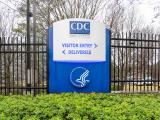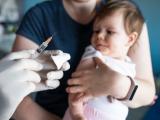A national snapshot used to gauge the health of the nation's health security and emergency preparedness found that readiness has improved significantly over the past 5 years, but earlier identified gaps remain, with some parts of the country lagging.
The nation made strides in a year when it was tested by record disasters and emergencies, which included two Gulf Coast hurricanes—Harvey and Irma—Puerto Rico's Hurricane Maria, and California's wildfires, according to the report.
Published annually since 2013, the National Health Security Preparedness Index (NHSPI) was released today by the Robert Wood Johnson Foundation (RWJF), which funds the effort. The US Centers for Disease Control and Prevention originally developed the assessment system, a collaborative effort that for 2017 analyzed 140 different measures across six domains.
On a 10-point scale, the United States as a whole had a score of 7.1 for 2017, nearly a 3% improvement over 2016 and nearly an 11% improvement since the index was unveiled 5 years ago. Eighteen states were above the national average, and 21 scored below the level. In total, 38 states and the District of Columbia improved their scores from last year, while 8 held steady and 4 declined.
At the current rate, it will take the country 9 more years to reach a strong health security level of at least 9, according to the report.
Alonzo Plough, PhD, MPH, vice president of research-evaluation-learning and chief science officer at RWJF, said in a press release from the foundation that threats to America's health security are rising, but so is the nation's preparedness to handle them. "The index shows how prepared public and private stakeholders are to tackle health security challenges and sheds light on areas for improvement."
Still, health officials are worried about differences in preparedness levels, especially given that some regions that lag behind are at higher risk of disasters and contain disproportionate numbers of low-income residents.
Equal protection an unmet priority
Two thirds of states saw improvement, but the authors of the report point out that Maryland, the highest-scoring state at 8.0, scored 25% higher than the lowest-scoring states, which were Alaska and Nevada, both at 6.4. In general, states in the Deep South, Southwest, and Mountain West lagged behind Northeast and Pacific Coast states.
The report notes that 12 states had stagnant or declining health security from 2016 to 2017, even as the nation's profile showed modest improvement. Each state's situation is unique, those with higher poverty levels generally have fewer public and private resources, and states grapple with many competing demands. States experiencing economic losses from past disasters also scored lower, which the group said likely reflects the challenge of diverting resources away from preparedness to cover recovery activities.
Also, the report found that health security is stronger in states that have achieved higher rates of health insurance coverage among residents.
Glen Mays, PhD, MPH, who leads a research team from the University of Kentucky that worked on the index, said in the press release that 5 years of continuous gains is remarkable progress, "But achieving equal protection across the US population remains a critical unmet priority."
Specific gains and other weak spots
Since the index began in 2013, the largest gain has been achieved in community planning and engagement, which was the weakest area when researchers first began the yearly task of reviewing the nation's health security. As of 2017, the measure improved by 22.4%—more than any other domain.
The biggest year-over-year gain in 2017 was in incident management, clocking in at 8.8 nationally, reflecting a 6% improvement from 2016. Researchers said the progress is the result of a decade of training government agencies, health professionals, and community leaders in the incident command process.
Another bright spot was the expanding membership and reach of preparedness coalitions, which have risen steadily since 2013, the group found.
An area of concern nationally, however, was little improvement in healthcare delivery dimensions. The team said the pressures of adjusting to shifts in health insurance coverage and new health delivery models while operating in an uncertain health policy environment make it hard for health systems to focus their attention and resources on community health security needs.
Recommendations for moving ahead
Today's report came with eight main recommendations for closing state and regional gaps and continuing improvement for the nation.
For example, the authors said each state and community needs people to monitor the health security enterprise as a whole to mobilize and coordinate actions. They recommend that states develop and promote the position of health security strategist to fill that role.
Another recommendation is to enhance health security data sources, systems, and metrics. The authors noted that existing systems aren't often shared and or linked to other relevant health security data sources. "To this end, state and federal stakeholders should create a standing committee and process for identifying unmet data and measurement needs across the U.S. health security enterprise and for developing data acquisition and exchange platforms that can address unmet needs," the team wrote.
Other recommendations revolved around preparedness planning, engaging the private sector, surge funding, stepped-up federal funding for establishing a robust health security infrastructure, and flexibility for allocating resources based on local needs.
See also:
Apr 17 NHSPI press release
Apr 17 NHSPI key findings
Apr 17 NHSPI full report
Apr 20, 2017, CIDRAP News story "US preparedness index finds sluggish, uneven progress"




















